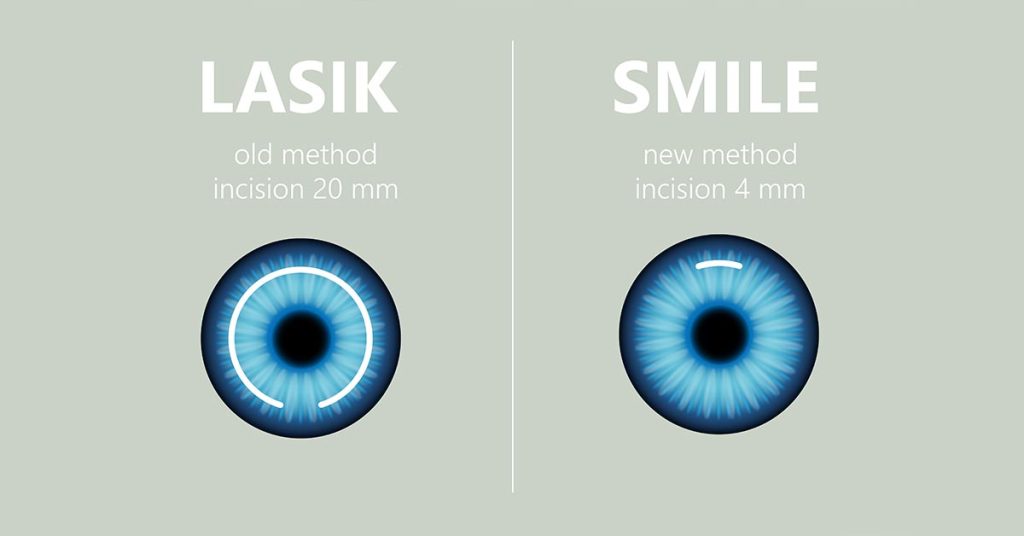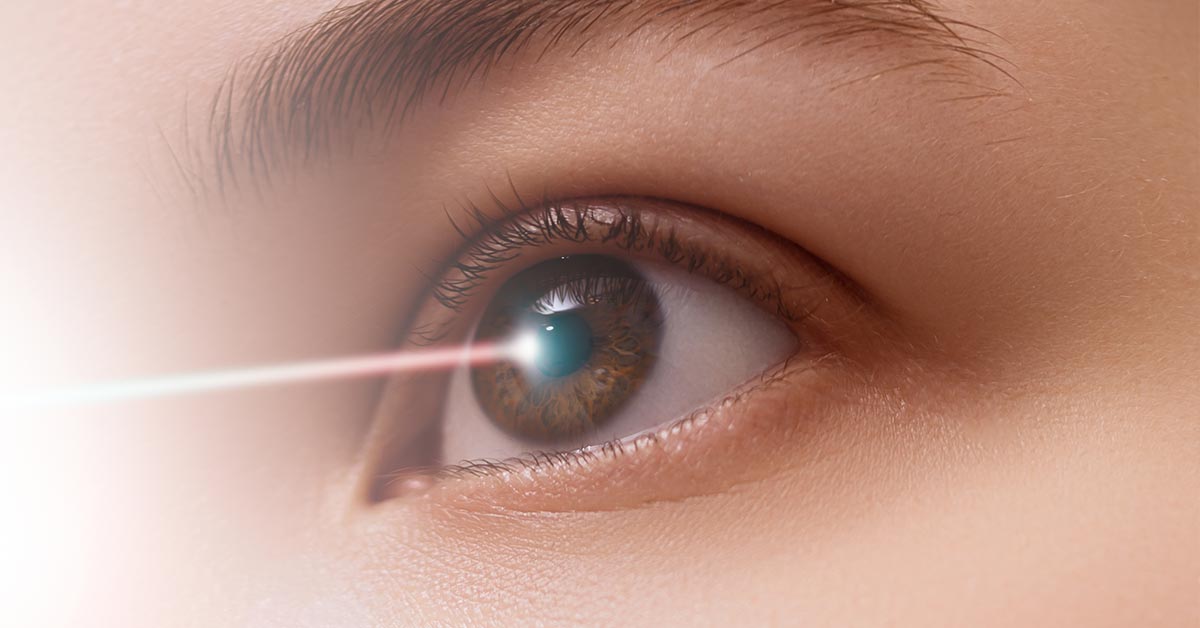SMILE and LASIK are both FDA-approved laser eye surgeries or refractive surgeries used to correct refractive errors. If you are wondering what the difference is, in this article, we will discuss SMILE vs LASIK – what they are, the procedures involved, and their key similarities and differences to provide insights on which option might be the right fit for you.
About Laser Eye Surgery
Laser eye surgery or refractive surgery aims to correct common vision problems like myopia (nearsightedness), hyperopia (farsightedness), and astigmatism. It employs various techniques to reshape the cornea, enabling clearer vision without the need for glasses or contact lenses.
What Is SMILE?
SMILE, which stands for Small Incision Lenticule Extraction, corrects myopia (nearsightedness) and astigmatism. What sets it apart is its minimally invasive approach, providing an alternative to traditional procedures like LASIK (Laser-Assisted In Situ Keratomileusis) and PRK (Photorefractive Keratectomy).
What Is LASIK?
LASIK eye surgery or Laser-Assisted in Situ Keratomileusis is a widely favoured eye surgery that addresses vision issues like nearsightedness, farsightedness, and astigmatism. It reshapes the cornea to focus the light on the retina (the light-sensitive tissue located at the back of the eye) for a clearer and sharper vision.
SMILE Vs LASK: Key Similarities
There are some similarities between SMILE and LASIK Eye Surgeries. It includes:
- Type of procedure – Both are laser-based procedures. They utilise laser technology to reshape the cornea and correct vision issues. The use of lasers contributes to precision and efficiency in the surgical process.
- Procedure time – Both surgeries may only take 15 minutes or less.
- Vision correction – Both procedures are effective in correcting common refractive errors resulting in 20/40 for most patients, 20/20 for many.
- Recovery time – The recovery time for both is relatively quick. Many patients experience improved vision within a few days.
- Suitable candidates – Patients must have good overall health with no underlying conditions that may impact ability to heal, like autoimmune conditions or diabetes. Patients must not be pregnant or breastfeeding as well.
- Side effects – There is the potential for similar side effects such as glares or halos around lights, dry eye, and trouble with vision in low-light situations.
SMILE Vs LASK: Key Differences
There are key differences between SMILE and LASIK procedures, ranging from the surgical techniques employed to the potential risks associated with each. Some differences are:
Aspect | SMILE | LASIK |
FDA Approval | Year 2016 | Year 1999 |
Suitable Age Of Candidate | FDA approved for 22 and older. | FDA approved for 18 and older. |
Corneal Thickness | Suitable for thinner corneas. | May require thicker corneas. |
Incision Technique | Involves creating a small incision in the cornea through which a lenticule (a small, lens-shaped piece of corneal tissue) is extracted to reshape the cornea and correct refractive errors. | Involves creating a corneal flap, which is a thin layer of corneal tissue that is lifted to expose the underlying corneal tissue. The laser then sculpts the cornea to achieve the desired correction, and the flap is repositioned. |
Surgical Technique | All-laser procedure. The entire process, from creating the incision to extracting the lenticule, is performed using a femtosecond laser. | Involves a two-step process. The flap is typically created using a microkeratome (a mechanical device) or a femtosecond laser. The subsequent corneal reshaping is done using an excimer laser. |
Treatment Range | Treats myopia and astigmatism. | Treats myopia, hyperopia, and astigmatism. |
Dry Eyes Risk | Lower risk of inducing dry eyes as compared to LASIK. | Associated with a slightly higher risk of dry eyes. |
Cost | May cost S$5,300 and above. | May cost S$3,000 and above. For a cost comparison of some clinics in Singapore, visit our article here. |
SMILE Vs LASIK Incision Size

SMILE Vs LASIK: Which One Is For You?
The decision between SMILE and LASIK may depend on various factors, including the patient’s prescription, corneal thickness, and personal preferences. Consulting with an experienced eye care professional is crucial for a comprehensive evaluation.
Key Takeaway
Both SMILE and LASIK are effective refractive surgery options with their own set of advantages and considerations. Understanding the key differences and similarities is essential for making an informed decision. If you are seeking clearer vision, you should consult with an eye care specialist to determine which procedure aligns best with your unique needs and preferences.
Schedule A Laser Eye Surgery Procedure
If you are interested in laser eye surgery and want to know if you are an ideal candidate, contact us through the button below to schedule a consultation.
Other Topics You Might Be Interested In
Protect against cancer, cardiovascular disease, and other chronic diseases with regular health screening. Compare and shop for health screenings from Singapore and regional healthcare providers at a single convenient platform - shop.health365.sg
This article is informative only and is not intended to be a substitute for professional medical advice, diagnosis, or treatment, and should never be relied upon for specific medical advice.






